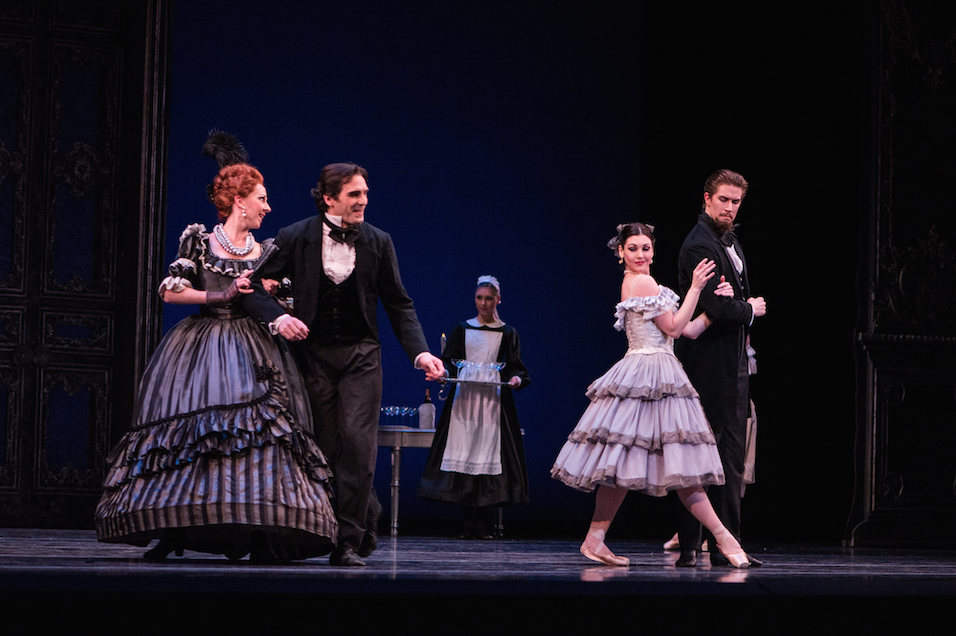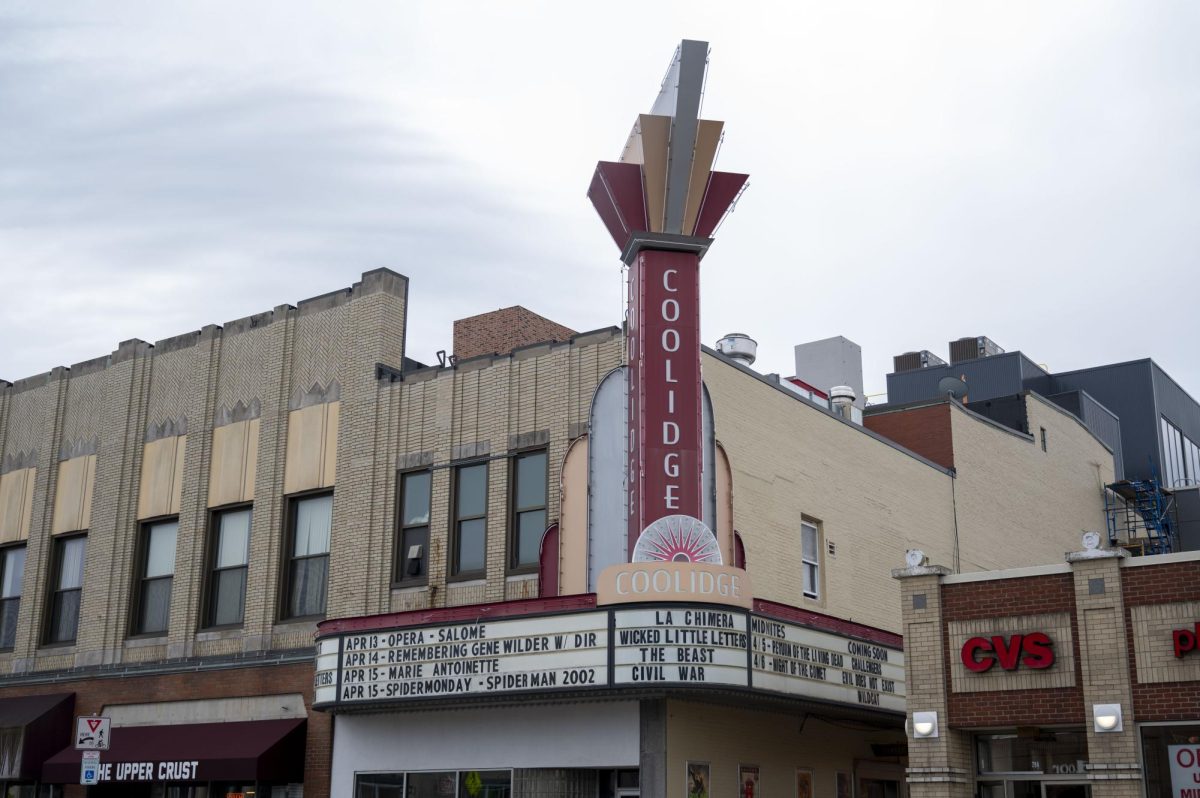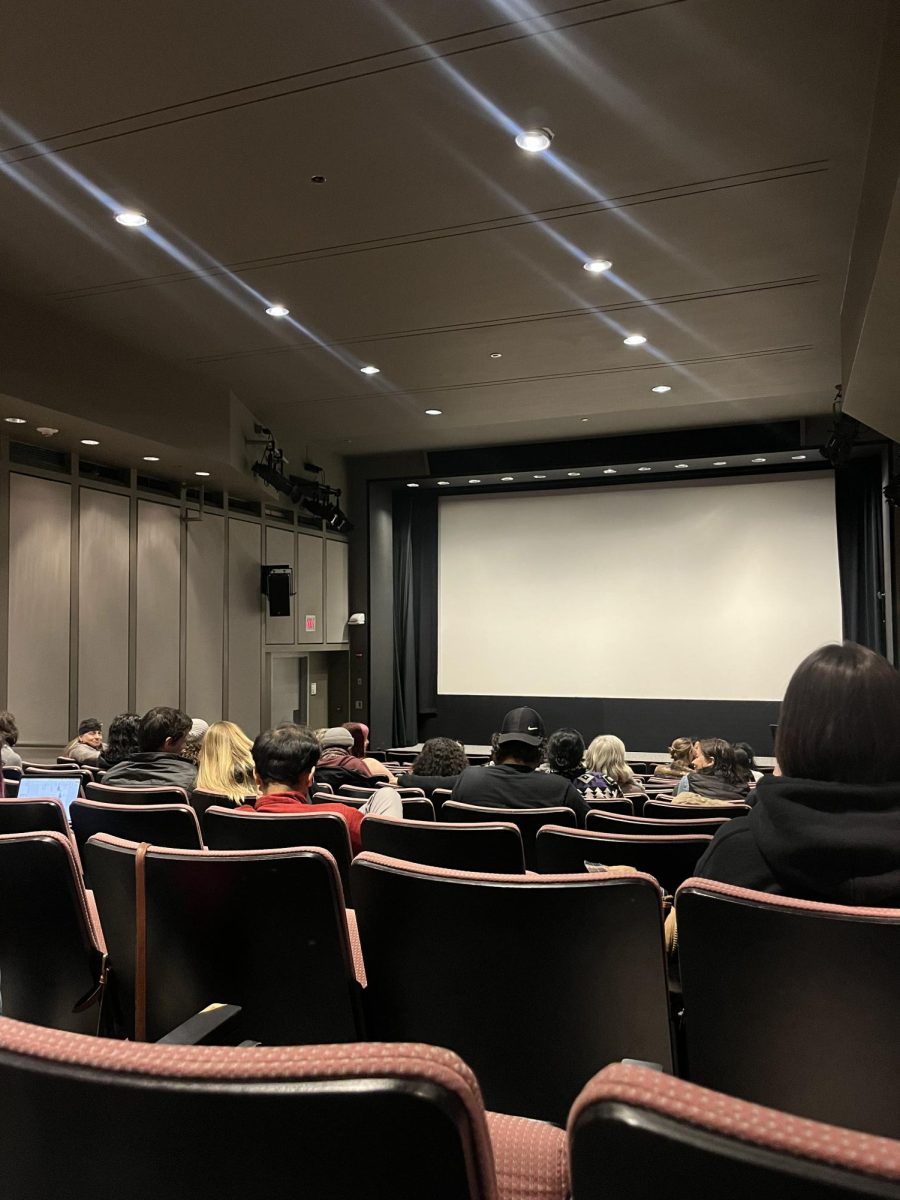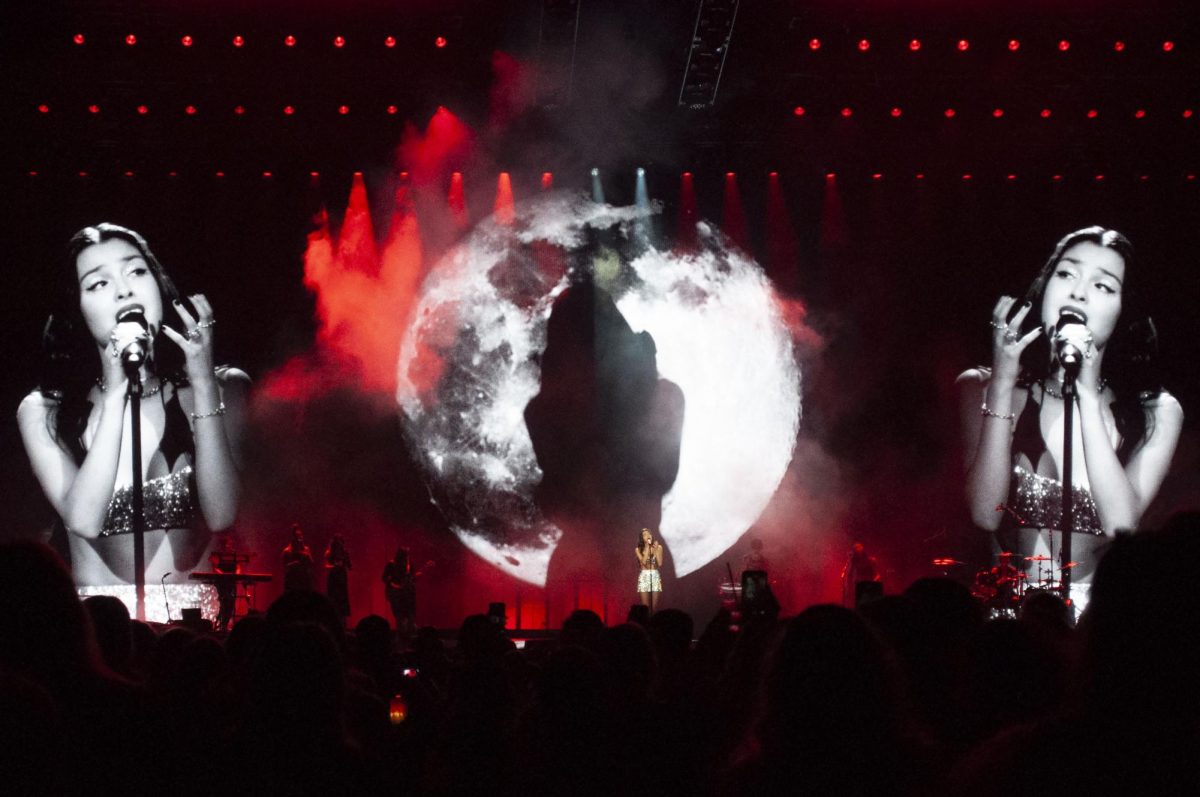By Rowena Lindsay, inside editor
Forbidden love, revenge, jealousy and murder all take center stage in the Boston Ballet’s newest show, “Lady of the Camellias,” which opened Thursday, Feb. 26 at the Boston Opera House. Based on a novel by Alexandre Dumas and set to the music of composer Frédéric Chopin, the ballet transports the audience to 19th-century France to tell the tragic tale of lovers Marguerite and Armand.
Choreographer Val Caniparoli created “Lady of the Camellias” in 1994.
While the cast rotates from night to night, Thursday’s performance featured principal dancers Kathleen Breen Combes and Yury Yanowsky as the doomed lovers.
“Lady of the Camellias” is a ballet of duets, or, as the French call it, pas de deux – “step of two.” There are very few individual solos in the show. Instead, the ballet explores the emotions and relationships between pairs of characters.
Each of the three acts opened with a large group dance, which set the scene before delving into the plot. In contrast to the dramatic storyline, theses dances were humorous and lighthearted, featured props, allowed a variety of non-principal dancers time in the spotlight and drew laughs from the audience.
The first act began at the home of the flirty and adored courtesan Marguerite. Among her guests is Baron de Varville who is initially the object of Marguerite’s affection; Olympe, a jealous courtesan; and Armand, who, after wooing her away from the Baron De Varville, becomes Marguerite’s lover.
Armand lingers after the party and the new lovers perform a romantic duet in Marguerite’s bedroom. The dance was so passionate and beautiful that the audience could easily suspend its disbelief and imagine that the two were truly falling in love. Much of this realism came from Combes’ incredibly dynamic facial expressions, which, in the absence of dialogue, drove the plot throughout the entire show.
During the intermission between the first and second acts, a soundtrack of birds tweeting mixed with the audience’s conversation. When the curtain rose, the dancers – all in light colored clothing – were in a French garden.
It is a short summer of love for Marguerite and Armand, however, as Marguerite falls ill and Armand’s father forces the lovers apart.
The second act features two different duets between men: Armand and his rival, Baron De Varville, and Armand and his father. These dances bring out the masculine side of ballet, which so frequently takes a secondary role to the female ballerinas.
The father-son dance, which features the vocals of tenor Rockland Osgood, is particularly moving and ends with the father holding his heartbroken son.
In the third and final act, the show dropped all pretenses of humor and became incredibly poignant.
The curtain rose for the last time to reveal the cast, clothed in dramatic evening formal wear that drew a gasp from the audience.
Costume designer Robert Glay de La Rose’s best work of the show was Olympe’s dress. The courtesan entered on Armand’s arm in a sparkling gold and blue dress so intoxicating that it drew all eyes to her despite the 15 other dancers on stage.
The ex-lovers then attempt to work out their feelings in a dance that conveys many emotions at once: Marguerite’s jealousy, Armand’s anger that she left him and, above all, the realization that they still love each other.
Another visually stunning moment occurs when Armand and the Baron de Varville enter onto the dark stage and circle, like vultures, around Marguerite’s body, which is illuminated by the spotlight. Cawing birdcalls echo in the background, a stark contrast from the chirping bird song in act two.
As Marguerite rises, she imagines a future in which Armand and Olympe are together; the pair dance a duet that mirrors her own dance with Armand from act one, accompanied by the vocals of soprano Alexandra Whitfield.
In Marguerite and Armand’s final pas de deux, Combes’ body is limp for much of the dance, as her illness and broken heart have taken hold of her. The effect is unnerving, as the audience has come to expect a different style of dance from the ballet, but it is no less beautiful.
The ballet ends with a stunning solo by Combes. She crawls to her dressing table to apply makeup and do her hair one last time before stumbling back to center stage where she collapses for the final time, her illness having defeated her.
As the cast came back to take its bows, their glowing smiles proved that they enjoyed the experience as much as the audience, who immediately stood to applaud the individuals who made the show the emotional spectacle that it was.
Boston Ballet’s “Lady of Camellias” is running until March 8 at the Boston Opera House.
Photos by Scotty Schenck














